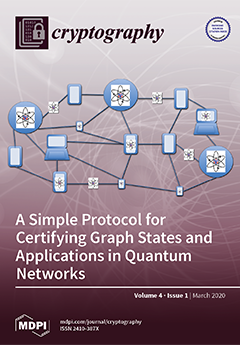Large-scale quantum computing poses a major threat to classical public-key cryptography. Recently, strong “quantum access” security models have shown that numerous symmetric-key cryptosystems are also vulnerable. In this paper, we consider classical encryption in a model that grants the adversary quantum oracle access
[...] Read more.
Large-scale quantum computing poses a major threat to classical public-key cryptography. Recently, strong “quantum access” security models have shown that numerous symmetric-key cryptosystems are also vulnerable. In this paper, we consider classical encryption in a model that grants the adversary quantum oracle access to encryption and decryption, but where we restrict the latter to non-adaptive (i.e., pre-challenge) queries only. We formalize this model using appropriate notions of ciphertext indistinguishability and semantic security (which are equivalent by standard arguments) and call it
in analogy to the classical
security model. We show that the standard pseudorandom function (
)-based encryption schemes are
-secure when instantiated with quantum-secure primitives. Our security proofs use a strong bound on quantum random-access codes with shared randomness. Revisiting plain
-secure Learning with Errors (
) encryption, we show that leaking only a single quantum decryption query (and no other leakage or queries of any kind) allows the adversary to recover the full secret key with constant success probability. Information-theoretically, full recovery of the key in the classical setting requires at least a linear number of decryption queries. Our results thus challenge the notion that
is unconditionally “just as secure” quantumly as it is classically. The algorithm at the core of our attack is a new variant of the well-known Bernstein–Vazirani algorithm. Finally, we emphasize that our results should not be interpreted as a weakness of these cryptosystems in their stated security setting (i.e., post-quantum chosen-plaintext secrecy). Rather, our results mean that, if these cryptosystems are exposed to chosen-ciphertext attacks (e.g., as a result of deployment in an inappropriate real-world setting) then quantum attacks are even more devastating than classical ones.
Full article





